In the early days of Huibo Hou’s landscape photography, she typically arrived at a location with a specific previsualized image in mind. She’d done her homework, perused the images of other photographers, and set her sights on a particular composition in a particular locale at a particular time of day. “But over the years, I found that this approach wasn’t working for me at all,” she says. One, it often led to disappointment, as nature doesn’t always go our way, meaning that her previsualized scene could differ greatly from reality. Two, the image she had in mind was inevitably influenced by other photographers’ works, so it wasn’t a unique take.
“Nowadays I just make sure I am in the rough vicinity of the right place around roughly the right time,” she says, remaining open-minded, flexible, and receptive as she surveys the scene. Instead of worrying about whether she can achieve an intended image, “I just let it be, just follow my intuition, and enjoy the experience,” she explains. “I let the images find me rather than the other way around.”
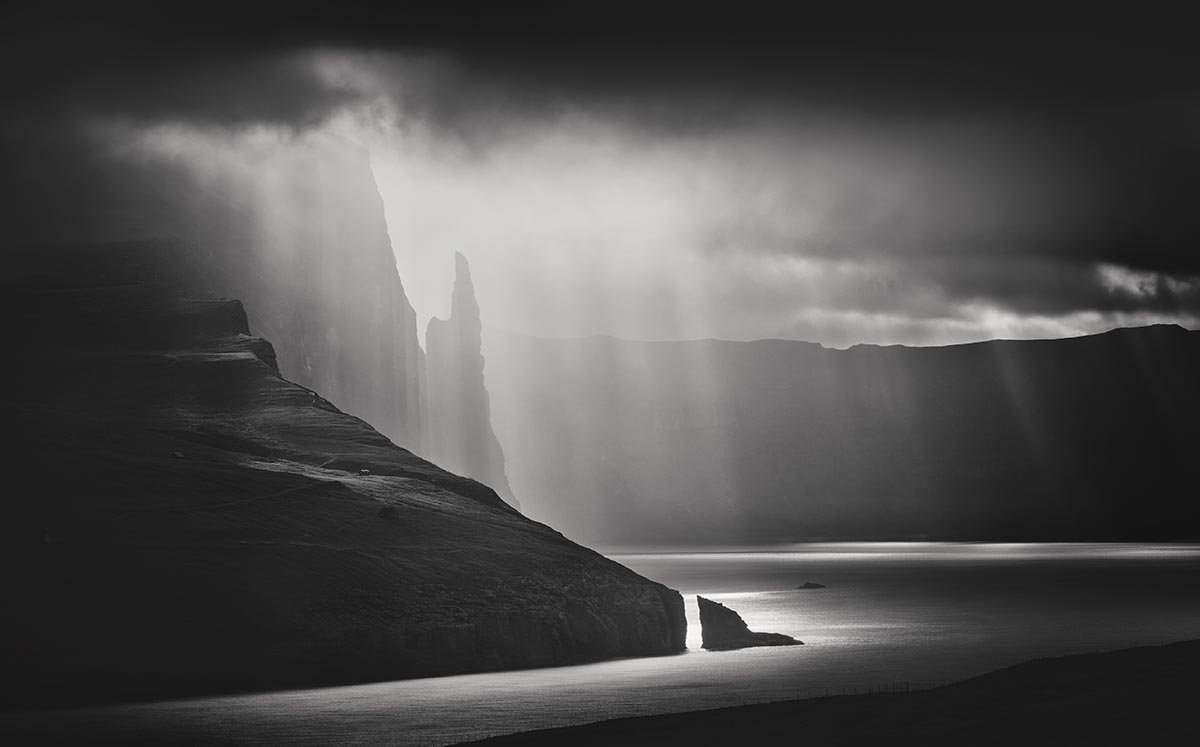
IMMERSED IN NATURE
Hou began making photographs 26 years ago on a road trip with her parents, who were visiting the United States from China. When she returned from the trip and developed her point-and-shoot photos, she was disappointed that the prints didn’t do justice to the grandeur of Yosemite National Park and the Grand Canyon. She purchased her first SLR and dove into improving the quality of her photos, a pursuit that has continued over almost three decades. “When I started, I really just had a simple purpose, to reproduce the beauty of the nature that I saw,” she says. Over the years her intent and her style have evolved significantly. “It went from trying to just do justice to what I see to really using it [photography] as a medium to show how I observe things and how I interpret the nature.”
A self-described introvert, Hou finds landscape photography an ideal fit for her personality, she says. It was also a welcome respite from her previous career as a computer engineer at a high-tech company. “I guess subconsciously I wanted to escape into a state that was simple and quiet,” she says. “Landscape photography provided a sanctuary for that. It let me slow down and just feel more relaxed. It also helped me discover a creative or artistic side that I didn’t even know I had.”
Hou often camps at the location she’s photographing so she can immerse herself in the natural surroundings. “I like to get up early—like, way early in the dark—because one of my favorite things to do is to shoot in the soft color before sunrise,” she explains. She continues making photographs after sunrise when the light remains good and most people are still asleep, a quiet period she cherishes. “I can take my time to observe and capture the landscape.” After a relaxing cup of coffee at the campsite, feeling satisfied she’s already accomplished something, she spends the morning and afternoon studying and scouting the area for photographs. “Late in the afternoon, I’m usually already in the field getting ready to start shooting, and I usually stay well after sunset.”
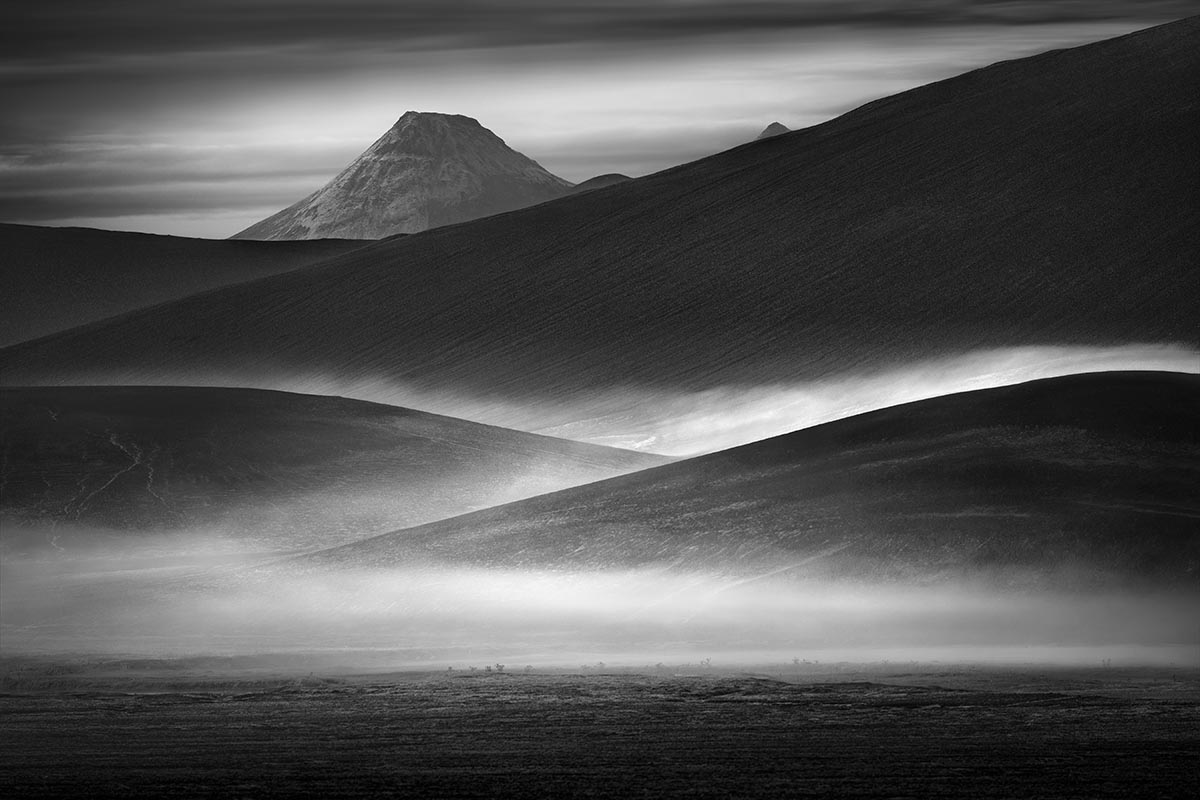
IN BLACK-AND-WHITE
Though Hou makes all her photographs in color, much of her work is converted to black-and-white in post-production. She began presenting black-and-white work based on her reaction to other photographers’ work that she admired. “Whenever I see a great black-and-white image, I feel my heart will skip a beat,” she says. “They just seem to be capable of touching me in a more profound way without the distraction of color.” What she loves about the medium aligns with what she loves about landscape photography—its simplicity. Black-and-white images “portray the essence of the subject,” she says.
Even though digital cameras can capture full resolution in black-and-white, she photographs in color because she likes the process of visualizing the final product in black-and-white in her mind’s eye and then later converting it to black-and-white and adjusting the tones in post-production. If the essence of the image to her is a certain color nuance or contrast, she’ll keep the image in color, but if the essence of the image is its patterns and lines, she converts it to black-and-white to elevate the visual and emotional impact. Sometimes she can visualize exactly how an image will look in black-and-white; other times it’s not clear until she creates it in post-production.
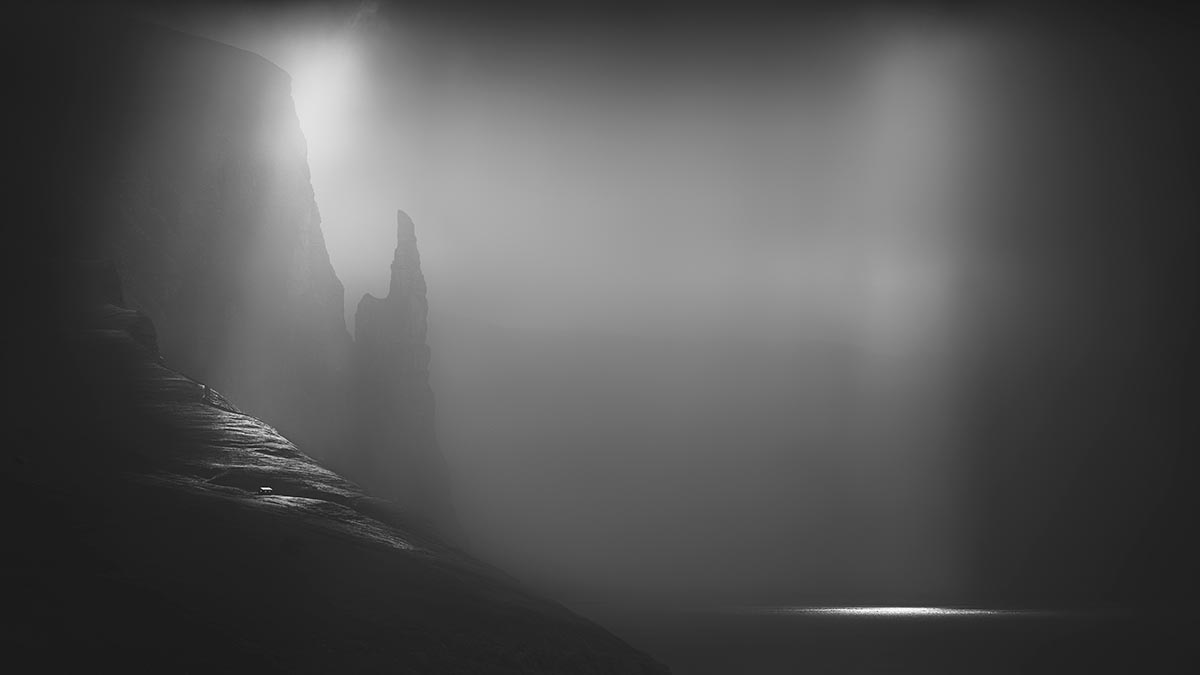
There are two things Hou keeps in mind for creating an impactful black-and-white image: form and mood. Nature is disorganized, she notes, so she looks for ways to extract order from the chaos, keeping her compositions as simple as possible. “I’ve learned that I have to see landscape beyond its literal appearance and intentionally see it in a more abstract way,” she explains. This enables her to create images of commonly photographed locales in a new way. When she photographed the natural scenes of Iceland, for example, she focused on the geometric shapes and lines of the landscape.
The second element she looks for is mood. “I think black-and-white is very powerful to deliver atmosphere and mood and emotion,” she says. To absorb that mood, she must be completely present and immersed in the moment as she’s making photographs: “When I’m in the field, I think this intuitive vision and this feeling will usually lead me to quote, unquote see the final image in my mind’s eye. Then later when I go back home and [edit] these images, what I usually try to do is to reproduce what I saw in my mind’s eye in the field through my post-processing.”
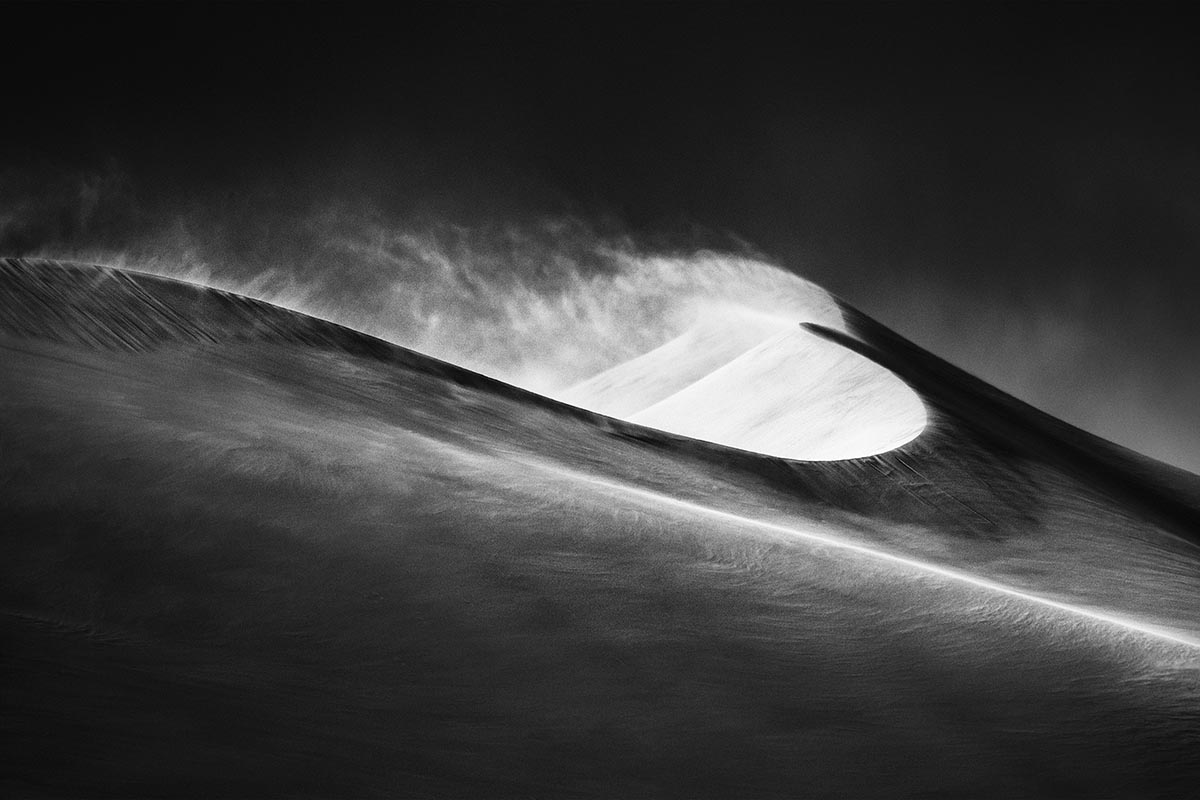
Simplicity is also important to her style. Stripping an image of its color forces you to focus on the basic structure and story of the composition, she explains. “I find myself constantly thinking how I can simplify things when I compose, to extract and reveal something simple, something essential about the landscape without putting too much clutter into the composition.” Over the years, this simplicity has become quintessential to her style. “When I go back and look at my older work, they [the photos] tend to be much busier and usually contain more details and textures. But … especially in more recent years, my work definitely has become more simplified because I realized the power of keeping images simple but still being able to deliver a much more focused intent.”
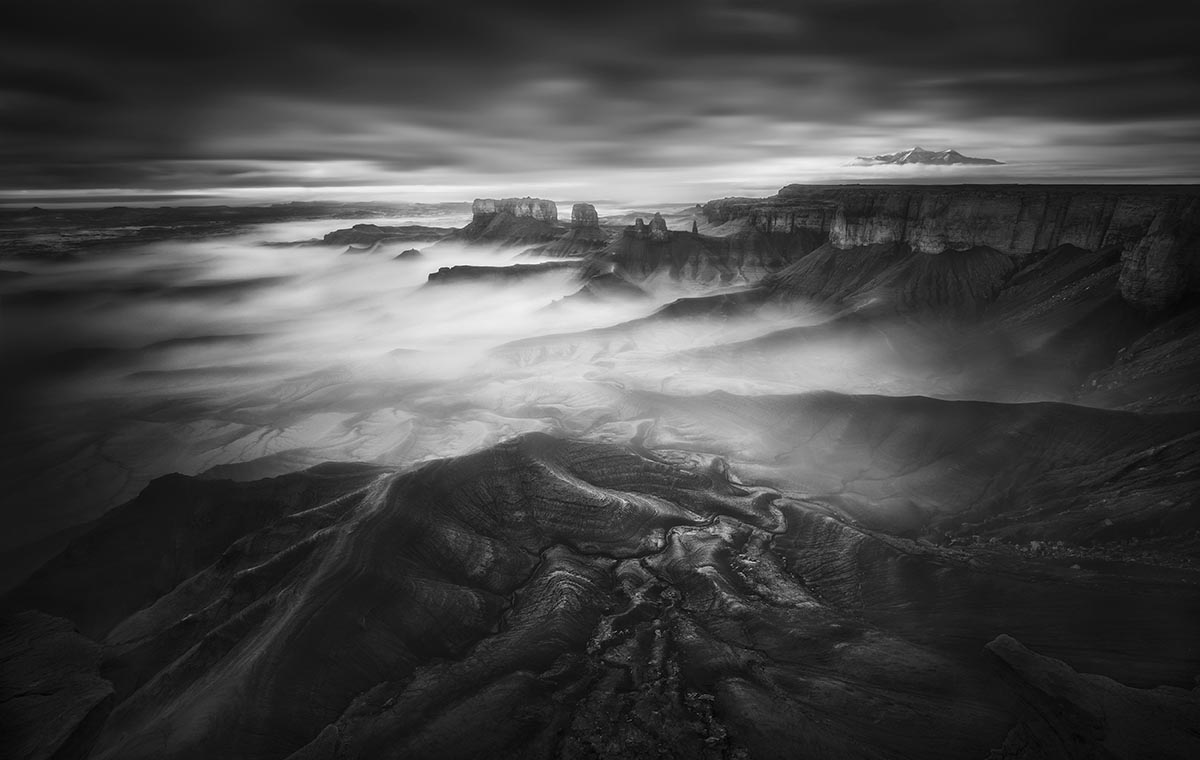
THE ESSENCE
Just as it’s important to reveal the essence of a subject, it’s also important for a photographer to reveal their own essence through images. “If there’s only one principle that all of us should follow in our journey of photography, it is staying true to ourselves,” says Hou. “This is probably the most important thing I have learned or extracted from my own photography journey.”
Hou’s advice for staying true to oneself: First, go at your own pace, allowing yourself time to develop despite what you see others doing. Second, focus on developing a personal connection with your subject matter and creating a style that reflects who you are. She finds this more important and interesting than producing work that’s similar to what’s been done. Three, shield yourself from the noise of social media—and that includes any praise you might receive for the work you share. “Resist the pressure to conform,” she says. “I think it’s great and beneficial to get constructive feedback and inspiration from others. But I think it’s dangerous to evaluate your own work purely based on how it is accepted by others.”
Perhaps as important is to follow your intuition and to find enjoyment. “When I relax and I am receptive, I really usually can produce better work,” Hou says. That’s when the best of the best images find her.
Amanda Arnold is a senior editor.

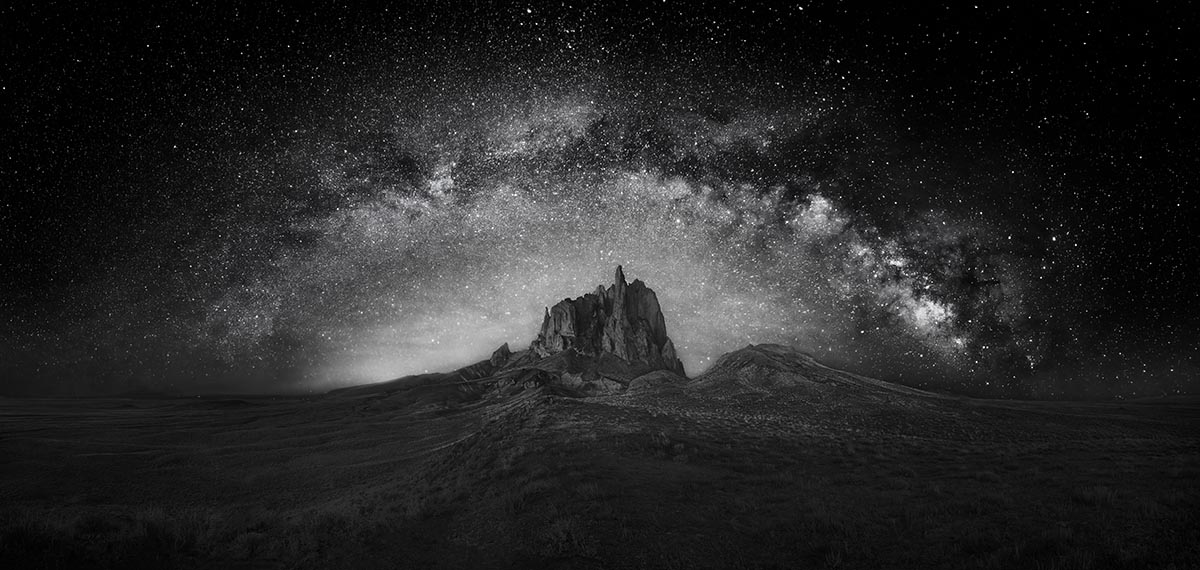
 View Gallery
View Gallery